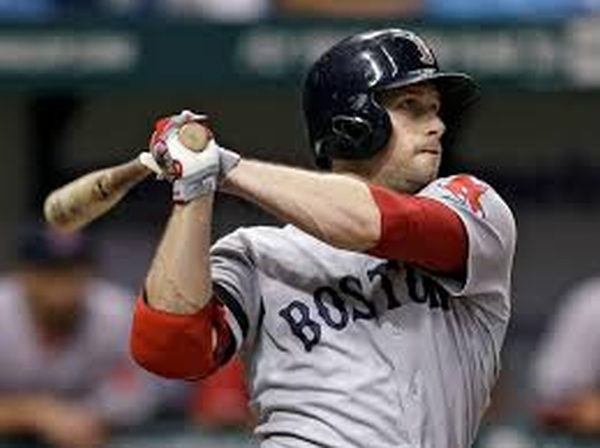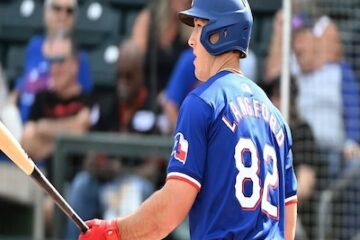2014 Fantasy Baseball: Rotters and Sleepers — Left Field

Fantasy outfielders are a dime a dozen. Of course, such a statement involves a lot of different perspectives on how to build a good fantasy baseball team. One could build from a position of strength and load up on fantasy studs. On the other hand, the advanced use of platoons has caused some fantasy owners to treat their teams in the same fashion. A quick look at the rotters and sleepers for each outfield slot reveals quite a few players that are good at one spot or another.
In Vince Gennaro’s Diamond Dollars, he chronicled just how much teams could save by platooning two players that are good at one side of the plate for the other. It would probably not surprise you to see that the Rays and Athletics (two smaller market teams) were the first to embrace such a system. The Rays have Matt Joyce, David DeJesus, and even Ben Zobrist who can all man left field when the situation calls for it.
Even when we look at basic numbers, we see that Joyce has an .835 OPS against right-handed pitchers and an OPS under .600 against lefties. So, the Rays and fantasy owners have an immediate advantage in that they can pay little for Joyce because his overall numbers make him look mediocre. So, you could get him on the waiver wire and get all-star level production if you start him only against right-handed pitchers.
|
AVG |
HR |
Runs |
RBI |
SB |
|
| 2011 |
.277 |
19 |
69 |
75 |
13 |
| 2012 |
.241 |
17 |
55 |
59 |
4 |
| 2013 |
.235 |
18 |
61 |
47 |
7 |
At first blush, it makes perfect sense for Joyce to stay on the waiver wire. He doesn’t hit for average, steal many bases, and the run production leaves a lot to be desired. However, when you consider that this is coming over 400 to 450 at bats then you just need someone to fill in the other 200 to 250. If you find someone with similar numbers against lefties you could wind up with a composite player that produces close to 30 home runs and drives in around 80 to 90 runs. That’s not bad for a position manned by waiver guys.
The question for Joyce is whether his average will go back to the .270s where it doesn’t excessively hurt you. After all, if you are going to start anyone that hits below .250, they need to offer at least one elite skill somewhere on the board. Joyce doesn’t offer any elite skills, but if he can hit around .270 he really doesn’t have to.
|
SO% |
BB% |
Oswing |
Contact |
BABIP |
|
| 2011 |
20.3 |
9.4 |
28.8 |
78.3 |
.317 |
| 2012 |
22.1 |
11.9 |
25.9 |
76.6 |
.281 |
| 2013 |
18.1 |
12.3 |
26.4 |
78.0 |
.251 |
These numbers make you want to jump all over Joyce. This is especially true if you play in a six category offensive league because that sixth category is almost always related to walks or on base percentage. In particular, the BABIPs are really appetizing when you correlate them with the batting averages we just referenced. After all, the whole idea was that if he could get his average up to .270 then he would be a very viable fantasy player. Well, if he raises that BABIP to just .290 then he would be back in that neighborhood. Naturally, the next question is whether there is something going on that is causing those BABIPs to drop.
|
LD% |
GB% |
FB% |
HR/FB |
ISO |
|
| 2011 |
21.2 |
36.4 |
42.4 |
12.3 |
.201 |
| 2012 |
19.3 |
37.5 |
43.2 |
13.3 |
.188 |
| 2013 |
20.3 |
36.7 |
43.0 |
12.7 |
.184 |
There is no good reason why Joyce’s BABIP should be as low as it is according to the data above. Every number appears to be better than the league average, but his BABIP fell well below the league average. Still, the Rays tried to deal Joyce in the offseason for Ike Davis. Ironically, Davis was another BABIP causality. Still, it seemed like even the enlightened Rays were ready to cut the cord on him. Who knows, as they often say, the best deals are usually the ones that aren’t made.
In other irony news, the Red Sox adopted a small market model last season and it ended up working out for them. In years past, they had thrown a lot of money at their problems, but they got more production in the outfield last season with fewer dollars than they had in previous seasons. Daniel Nava was one of the main reasons for that. Like Joyce, he is flawed when playing regularly, but if you manage his opportunities he can be very successful. He certainly wouldn’t be a major candidate for the Red Sox MVP award in 2013, but his improved performance is one of the many reasons why they got as far as they did.
|
AVG |
HR |
Runs |
RBI |
SB |
|
| 2011 |
.242 |
1 |
23 |
26 |
1 |
| 2012 |
.243 |
6 |
38 |
33 |
3 |
| 2013 |
.303 |
12 |
77 |
66 |
0 |
Beauty is often in the eye of the beholder. At some positions, a player that hits .300 and 12 home runs is a fantasy starter. In the outfield, he barely registers as a bench player. Yet, you can’t help but think that Nava took a lot of fantasy players by surprise after his 2011 and 2012 seasons. The question is whether it is one of those once in a lifetime seasons or whether he is a young player just coming into his own. The Red Sox will hedge their bets just the same with Grady Sizemore, Jackie Bradley Jr, and Mike Carp. That’s probably enough to manage his opportunities again.
|
SO% |
BB% |
Oswing |
Contact |
BABIP |
|
| 2011 |
24.5 |
10.1 |
26.4 |
75.6 |
.333 |
| 2012 |
19.9 |
11.7 |
19.6 |
84.7 |
.295 |
| 2013 |
17.4 |
9.5 |
25.6 |
84.6 |
.352 |
I would normally begin to write off Nava as a one year wonder because of his BABIP, but the rest of his numbers have steadily improved. This is the mark of a young player getting his sea legs, but it also could be the Red Sox discovering how to manage risk. If you play a player when he is most likely to be successful, you will not only see the traditional numbers go up, but you’ll also see the plate discipline and batted ball numbers affected as well.
|
LD% |
GB% |
FB% |
HR/FB |
ISO |
|
| 2011 |
15.8 |
39.5 |
44.7 |
2.0 |
.118 |
| 2012 |
23.3 |
38.3 |
38.3 |
7.6 |
.146 |
| 2013 |
26.1 |
34.2 |
39.6 |
8.2 |
.142 |
As usual, the batted ball numbers tell the tale. The line drive rate last year was very high and likely unsustainable. So, the BABIP wasn’t so much a product of luck, but a product of extreme performance. If this has anything to do with successfully being platooned then the Red Sox may have found something. The best thing about it is that they won’t have to pay eight figures to keep that kind of production in the lineup.





